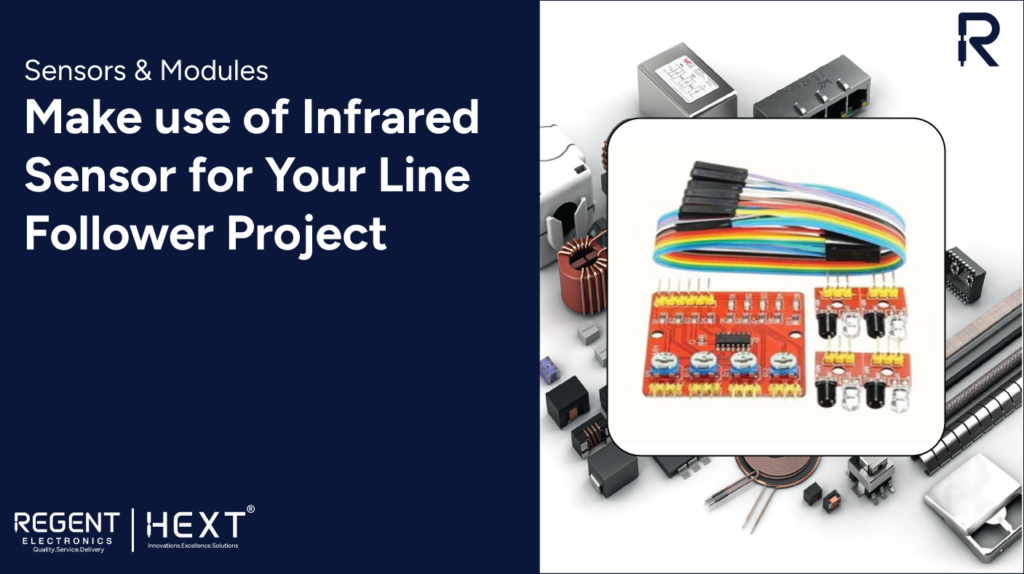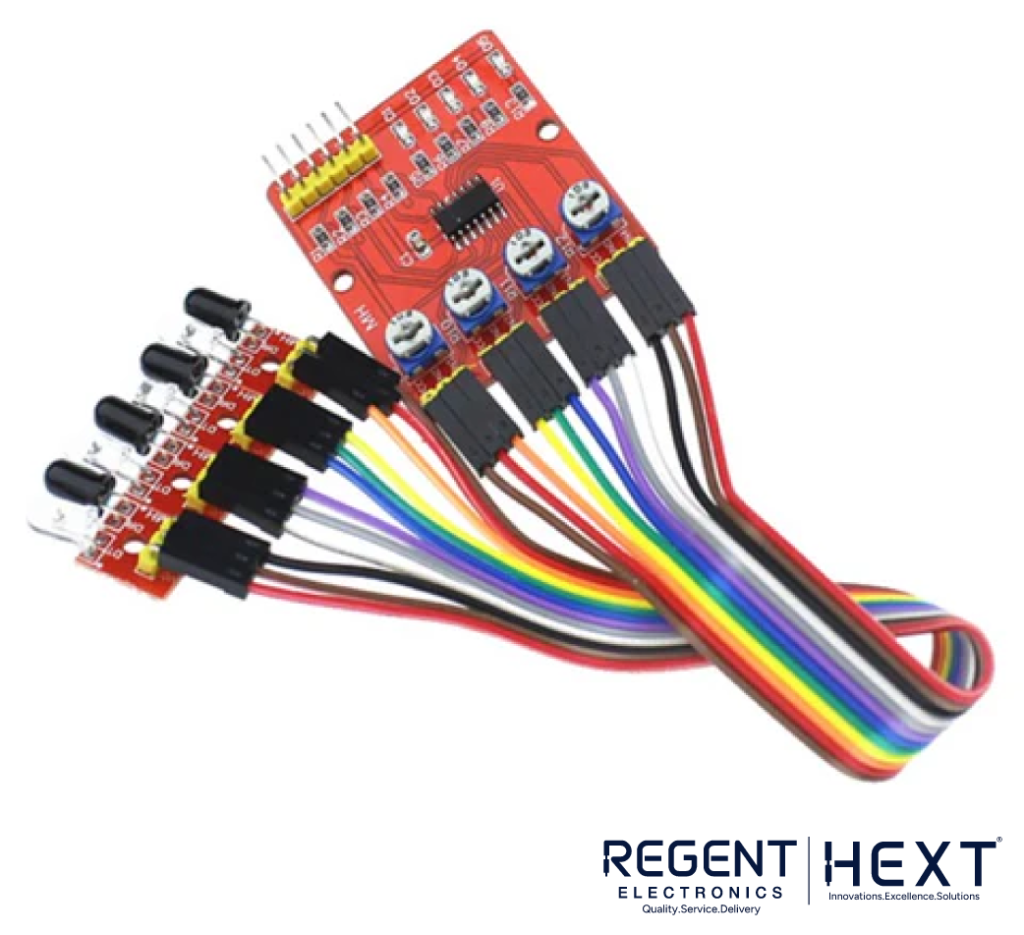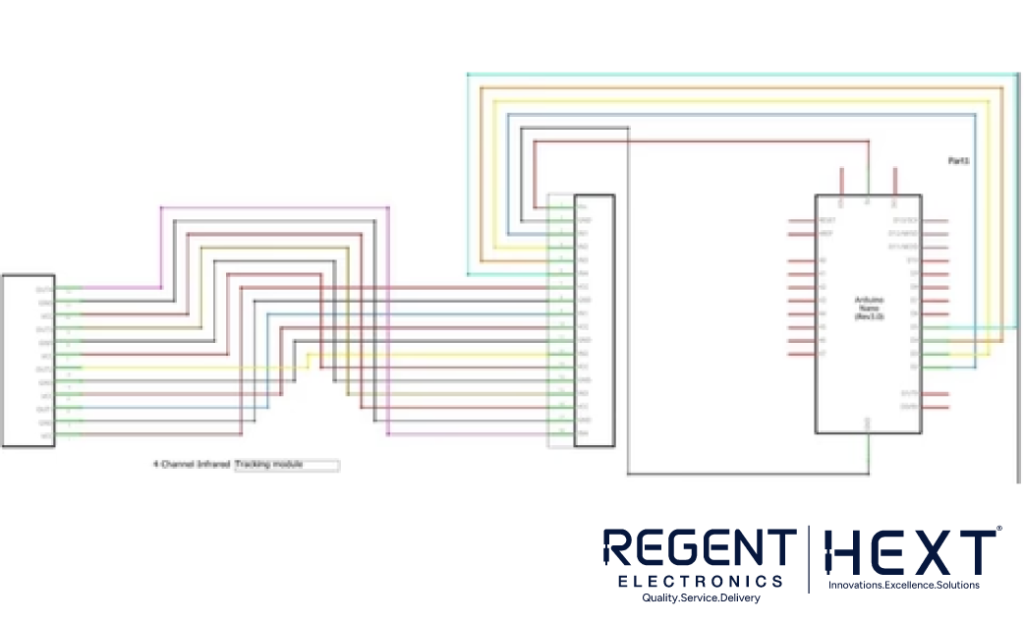
Enhance Your Line Follower Project with Infrared Sensors
Infrared (IR) sensors are indispensable components in robotics and electronics, offering reliable motion detection and obstacle tracking capabilities. These sensors operate by detecting infrared light emitted from objects. While the human eye cannot see infrared radiation, IR sensors can pick it up, converting it into readable voltage signals. This makes them an ideal choice for line follower projects, where precise tracking and motion detection are crucial.
Regent Electronics provides high-quality 4-channel infrared tracking modules that simplify the integration of IR sensors into your projects, ensuring accurate performance and reliable results.
Understanding Infrared Sensors

IR sensors detect variations in infrared radiation and translate them into voltage signals. These signals are processed by microcontrollers or microprocessor-based development kits via analog pins. IR sensors perform best when detecting black surfaces or obstacles, as they absorb more infrared light.
The module includes four IR sensors mounted on individual PCBs, which can be positioned as required. Each sensor is calibrated using potentiometers on the mainboard, enabling precise adjustments to suit your project needs.
How to Use the 4-Channel Infrared Tracking Module
Step-by-Step Connections
- Connect the 5V pin of the Arduino to the Vin pin of the IR module.
- Attach the GND pin of the module to the Arduino’s GND pin.
- Connect the IN1, IN2, IN3, and IN4 pins of the module to Arduino’s digital pins 2, 3, 4, and 5, respectively.
- Link all the VCC pins of the module together.
- Similarly, connect all the GND pins of the module.
- Connect the OUT1, OUT2, OUT3, and OUT4 pins to their corresponding IN1, IN2, IN3, and IN4 pins on the other side of the module.
Refer to the schematic diagram for a visual guide to these connections.

Sample Code for Arduino
cpp
CopyEdit
int s1 = 2; // First sensor
int s2 = 3; // Second sensor
int s3 = 4; // Third sensor
int s4 = 5; // Fourth sensor
void setup() {
Serial.begin(9600);
pinMode(s1, INPUT); // Set first sensor as input
pinMode(s2, INPUT); // Set second sensor as input
pinMode(s3, INPUT); // Set third sensor as input
pinMode(s4, INPUT); // Set fourth sensor as input
}
void loop() {
int ss1 = digitalRead(s1); // Read first sensor
int ss2 = digitalRead(s2); // Read second sensor
int ss3 = digitalRead(s3); // Read third sensor
int ss4 = digitalRead(s4); // Read fourth sensor
Serial.print(“S1 = “);
Serial.println(ss1);
Serial.print(“S2 = “);
Serial.println(ss2);
Serial.print(“S3 = “);
Serial.println(ss3);
Serial.print(“S4 = “);
Serial.println(ss4);
delay(200); // Small delay for stability
}
This code reads digital input from each sensor and prints their status as either high (1) or low (0). These readings can be used to control your line follower robot or any other IR-based application.
Applications of Infrared Sensors
- Line Follower Robots: Navigate tracks by detecting lines or paths.
- Obstacle Detection: Identify barriers in the path to avoid collisions.
- Motion Detection: Sense movement for automation or security purposes.
- Alarm Systems: Trigger alarms based on motion or obstacles.
- Human Detection: Detect human presence in a specified area.
Why Choose Regent Electronics?
At Regent Electronics, we specialize in providing advanced electronics solutions tailored to your project needs. Our 4-channel infrared tracking modules ensure accurate performance and durability, making them ideal for line follower projects and beyond.
Upgrade your robotics and electronics projects today! Explore our range of premium infrared sensors at Regent Electronics and bring your ideas to life.
